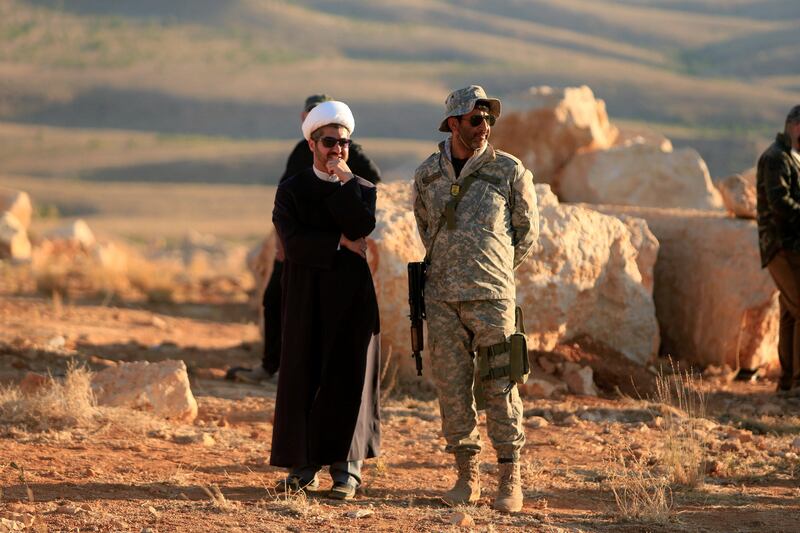Hizbollah fighters say they are waiting for orders regarding whether they will participate in further operations against militants inside Lebanon after they successfully defeated hundreds of Al Qaeda-linked fighters last week in a battle on the Lebanese-Syrian border.
The fight officially ended on Thursday with the declaration of a cease-fire and an agreement that as many as 10,000 Syrian refugees, including hundreds of militants, would return to Syria in exchange for the release of eight Hizbollah fighters captured by Hayat Tahrir Al Sham, formerly known as Jabhat Fateh Al Sham or Jabhat Al Nusra.
On Saturday, Hizbollah’s media office led journalists on a tour of the remote mountainous area between the northern Lebanese city of Arsal and the nearby Syrian city of Flita that Hizbollah fighters captured from Tahrir Al Sham in a seven-day battle.
The tour focused on a cave complex where Hizbollah officials said the extremist group, which was formerly Al Qaeda’s Syria branch, had held some of the Lebanese Army soldiers it captured when it overran Arsal in 2014. Nine of those soldiers are still missing, and possibly held by ISIL fighters who hold positions outside of Arsal.
The cave complex was large enough to also hold dozens of fighters, and live munitions were still present, including mortar and artillery rounds that militants appeared to be turning into IEDs or car bombs. Food and personal affects had been left behind as the fighters withdrew from the area ahead of the assault. Hizbollah’s War Media Centre reported that the remaining militants had taken shelter with Syrian refugees in a 5-square kilometer area that was surrounded by Hizbollah fighters. The centre also reported that 27 Hizbollah fighters had died and more than 100 Tahrir Al Sham fighters had been killed during the fighting. On Sunday, the groups had also begun swapping corpses as part of the cease-fire deal.
The operation, which Hizbollah officials said covered about 100 square kilometers in total, is the largest offensive the group has undertaken taken on Lebanese soil. Hizbollah officials said their fighters used guerilla-style tactics in their offensive against Tahrir Al Sham. On Saturday’s tour, however, included several Hizbollah positions in the area, some of which resembled the small firebases of a conventional military force. Hizbollah fighters have been dug in around the area since at least 2015, when they began operations to secure parts of the border.
The Lebanese military remained outside the area during the fighting, although Hizbollah officials said the army provided support by shelling the area. The Lebanese air force also attacked Tahrir Al Sham positions, along with the Syrian air force.
Hizbollah members said the ability to conduct the operation had existed for months, but that the group was waiting for a political agreement or for the army to conduct the operation.
While Tahrir Al Sham positions were largely located to the south of Arsal, hundreds of ISIL fighters continue to hold positions to the north of the city between the Syrian border and the Lebanese towns of Qaa and Ras Baalbek.
There has been no announcement yet from the Lebanese military or from Hizbollah when such an operation against those militants might begin.
















